Classification Vehicle - This is the distribution of various cars into groups, classes and categories. Depending on the type of construction, the parameters of the power unit, the purpose or features that these or those vehicles have, the classification provides for several such categories.
Intended classification
Vehicles vary in purpose. You can distinguish passenger and trucks, as well as special vehicles.
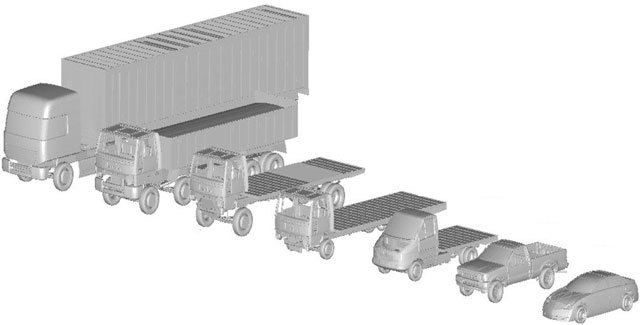
If everything is very clear with passenger and freight cars, then special transport is not intended for the transport of people and goods. Similar cars transport equipment that is fixed to them. So, firefighters, aerial platforms, truck cranes, truck benches and other cars equipped with this or that equipment can be attributed to such means.
If a passenger car can accommodate up to 8 people without a driver, then it is classified as a passenger. If the vehicle capacity is more than 8 people, then this type of vehicle is a bus.
The transporter can serve for general purposes or for the transport of special goods. General purpose cars have in their design a body with sides without a tipping device. They can also be equipped with an awning and arches for installation.
Special purpose trucks have in their design various technical capabilities for the transportation of certain goods. For example, a panel truck is optimized for convenient transportation of panels and building boards. The dump truck is used mainly for bulk cargo. The fuel truck is designed for light petroleum products.
Trailers, semi-trailers, dissolution trailers
Any vehicle can be used with additional equipment. It can be trailers, semi-trailers or dissolutions.
A trailer is one of the types of vehicles used without a driver. Its movement is carried out by means of a car using towing.
The semi-trailer is a towed vehicle without the participation of the driver. Part of its mass is given to the towing car.
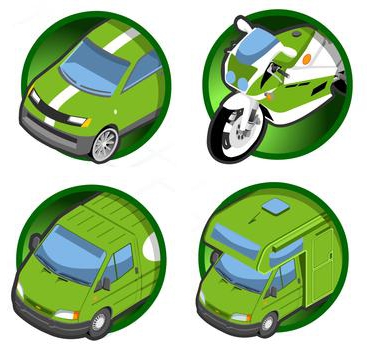
The dissolution trailer is designed to transport long loads. The design provides a drawbar, the length of which during operation can vary.
A towing vehicle is called a tractor. This car is equipped with a special device that allows you to couple the car and any of the trailers. In another way, such a design is called a saddle, and the tractor is called a truck tractor. However, the truck tractor is in a separate category of vehicles.
Indexes and Views
Previously, in the USSR, each vehicle model had its own index. It denoted the factory in which the car was produced.
In 1966, they adopted the so-called industry standard OH 025270-66 “Classification and designation system for automotive rolling stock, as well as its units and assemblies”. This document not only allowed to classify types of vehicles. Based on this provision, trailers and other equipment were also classified.
Under this system, all vehicles whose classification was described in this document had four, five or six digits in their index. On them it was possible to determine the categories of vehicles.
Deciphering Digital Indexes
By the second digit it was possible to find out the type of vehicle. 1 - passenger vehicle, 2 - bus, 3 - general purpose truck, 4 - truck tractor, 5 - dump truck, 6 - tank, 7 - van, 9 - special purpose vehicles.
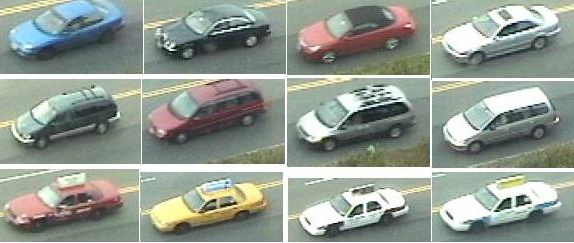
As for the first digit, it denoted the class of the vehicle. For example, passenger cars, the classification of which was carried out according to engine displacement. Trucks are divided into classes by weight. Buses were distinguished by length.
Classification of passenger vehicles
By industry standard, light wheeled vehicles were classified as follows.
- 1 - a particularly small class, the engine capacity was up to 1.2 liters;
- 2 - small class, volume from 1.3 to 1.8 l;
- 3 - middle class cars, engine displacement from 1.9 to 3.5 liters;
- 4 - a large class with a volume above 3.5 liters;
- 5 - the highest class of passenger vehicles.
Today, industry normal is no longer mandatory, and many plants do not adhere to it. However, domestic auto manufacturers still use this indexing.
Sometimes you can find vehicles whose classification does not fit the first digit in the model. This means that the index was assigned to the model at the development stage, and then something changed in the design, but the figure remained.
Foreign cars and their classification system
Indices of foreign cars that were imported into the territory of our country were not included in the list of vehicles according to the accepted normal. Therefore, in 1992 it was introduced Certification system on motor vehicles, and from October 1, 1998, its amended version is valid.
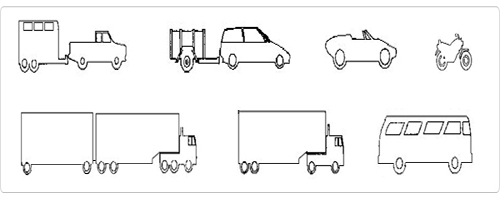
For all types of vehicles that fell into circulation in our country, it was necessary to draw up a special document called “Type approval of a vehicle”. From the document it followed that each vehicle should have its own separate brand.
International vehicle classification based on UNECE recommendations
To simplify the procedure for certification in the Russian Federation, the so-called International Classification System is used. In accordance with it, any road vehicle can be attributed to one of the groups - L, M, N, O. There are no other designations.
Categories of vehicles according to the international system
Group L includes any vehicle with less than four wheels, as well as ATVs:
- L1 is a moped or vehicle with two wheels, which can reach a maximum speed of 50 km / h. If a vehicle has an internal combustion engine, its volume should not exceed 50 cm³. If an electric motor is used as a power unit, then the rated power indicators should be less than 4 kW;
- L2 - a three-wheeled moped, as well as any vehicle with three wheels, the speed of which does not exceed 50 km / h, and the engine displacement is 50 cm³;
- L3 - a motorcycle with a volume of more than 50 cm³. Its maximum speed is higher than 50 km / h;
- L4 - a motorcycle equipped with a sidecar for transporting a passenger;
- L5 - tricycles whose speed exceeds 50 km / h;
- The L6 is a lightweight ATV. The mass of the equipped vehicle should not exceed 350 kg; Maximum speed no more than 50 km / h;
- L7 - a complete ATV with a weight of up to 400 kg.
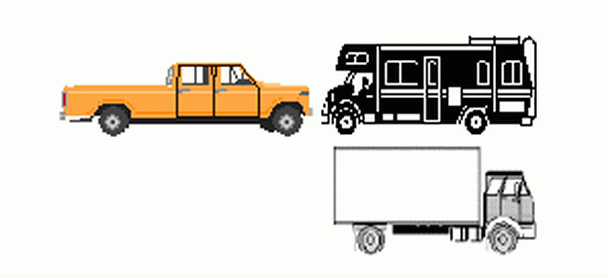
Category M is a four-wheeled motor vehicle for transporting passengers:
- M1 is a vehicle for the transport of passengers who have no more than 8 seats;
- M2 - vehicle with more than eight seats for passengers;
- M3 - vehicle with more than 8 seats and weighing up to 5 tons;
- M4 - a vehicle with more than eight seats and weighing more than 5 tons.
Category N according to the international classification include trucks:
- N1 - trucks weighing up to 3.5 tons;
- N2 - TS with a mass of 3.5 to 12 tons;
- N3 - vehicles with a mass of more than 12 tons.
Classification of vehicles according to the European Convention
In 1968, the Convention on Road Traffic was adopted in Austria. The classification provided in this document is used to denote various categories of transport.
Types of vehicles under the Convention
It includes several categories:
- And - these are motorcycles and other two-wheeled motorized equipment;
- B - cars with a mass of up to 3500 kg and a number of seats not more than eight;
- C - all vehicles, except those that belong to category D.The mass should be more than 3500 kg;
- D - passenger transport with more than 8 seats;
- E - freight transport, tractors.
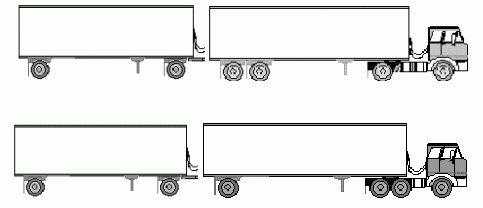
Category E allows drivers to drive road trains that consist of a tractor. Also, you can include any vehicles of classification B, C, D. These vehicles can work as part of a road train. This category is assigned to drivers along with the other categories, and it is put in the vehicle certificate when registering the car.
Unofficial European classification
In addition to the official classification, there is also an unofficial classification, which is widely used. It is quite popular among vehicle owners. Here you can distinguish categories depending on the design of vehicles: A, B, C, D, E, F. Basically, such a classification is used in reviews by automotive journalists for comparison and evaluation.
Class A contains small cars of low cost. F - this is the most expensive, very powerful and prestigious car brand. In between are classes of other types of machines. There is no clear framework here. This is a lot of the most diverse passenger cars.
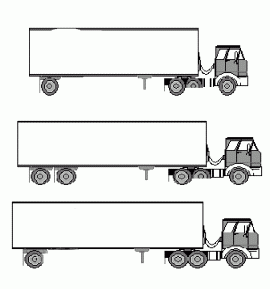
With the development of the auto industry, new cars are constantly being produced, which subsequently occupy their niches. With new developments, the classification is constantly expanding. It often happens that different models can occupy the boundaries of several classes, thereby forming a new class.
A striking example of this phenomenon is a parquet SUV. It is designed for paved roads.
VIN codes
In fact, this is a unique vehicle number. In this code, all information about the origin, manufacturer and technical characteristics of a particular model is encrypted. Numbers can be found on many integral parts and machine assemblies. They are mainly located on the body, chassis elements or special nameplates.
Those who developed and implemented these numbers introduced the simplest and most reliable method, which greatly facilitates the process of classifying cars. This number allows you to at least slightly protect cars from theft.
The code itself is not a mess of letters and numbers. Each sign carries certain information. The cipher suite is not very large, each code has 17 characters. These are mainly letters of the Latin alphabet and numbers. This cipher provides a position for a special control number, which is calculated based on the code itself.
The process of calculating the control number is a fairly powerful means of protection against broken numbers. Figures to destroy is not difficult. But to make such a number so that it falls under the control number is a separate and rather complicated task.
In conclusion, I would like to add that all self-respecting car manufacturers use general rules to calculate the check digit. However, manufacturers from Russia, Japan and Korea do not adhere to such protection methods. By the way, this code makes it easy to find original spare parts for a particular model.
So, we found out what types of vehicles are, and examined their detailed classification.








